Processing your Fleece
Attentive shearing and processing of your fleece ensures higher quality overall, whether you choose to sell your fleece to processor or DIY.
Struggling with processing? Contact Christiann for private or group lessons in processing your fleece & fiber.
Skirting
The first step in processing your fleece after shearing day, is Skirting.
A simple table made from a sturdy wire grid frame (fencing panel) covered with chicken wire or other open mesh works well as it allows the second cuts, dirt and loose vegetable matter (VM) to fall through as you shake the fleece and skirt it.
Place the fleece cut side down, working around the edge of the fleece, removing all VM, stained areas, burrs, and any fibers or felted parts that do not fit with the quality of the overall fleece cut.
After the edges are done, continue working towards the middle of the fleece until the entire fleece has been worked.
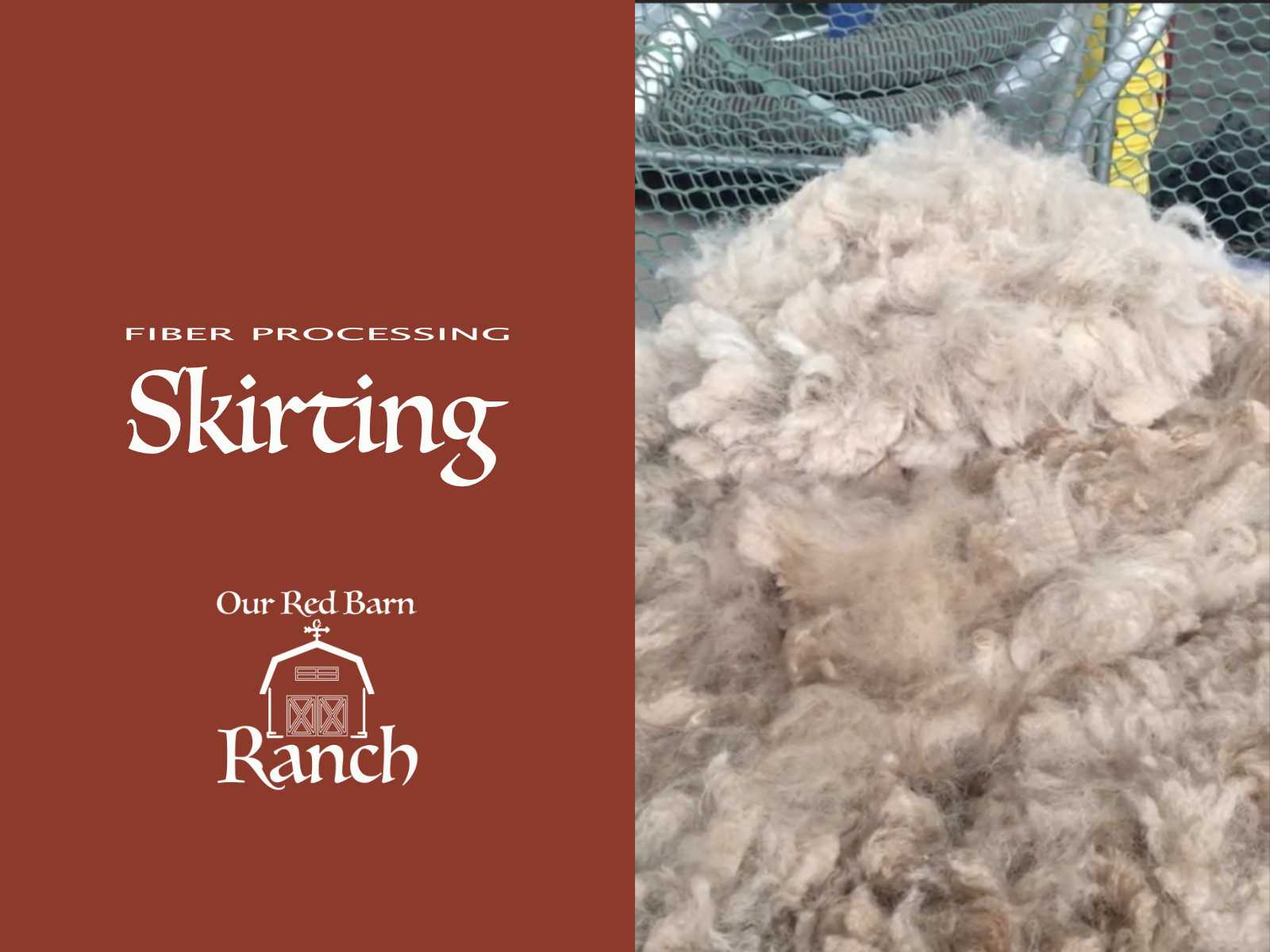
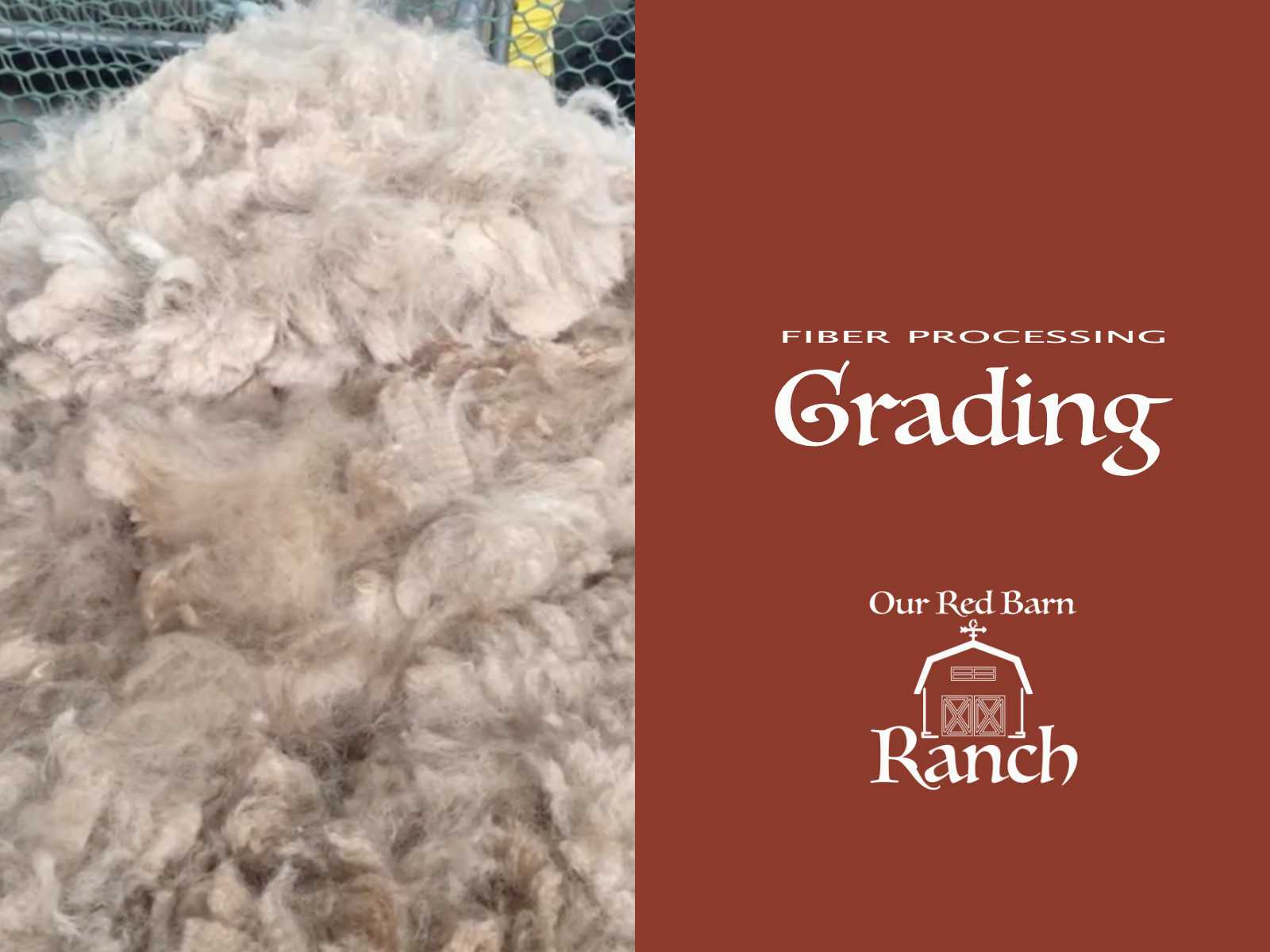
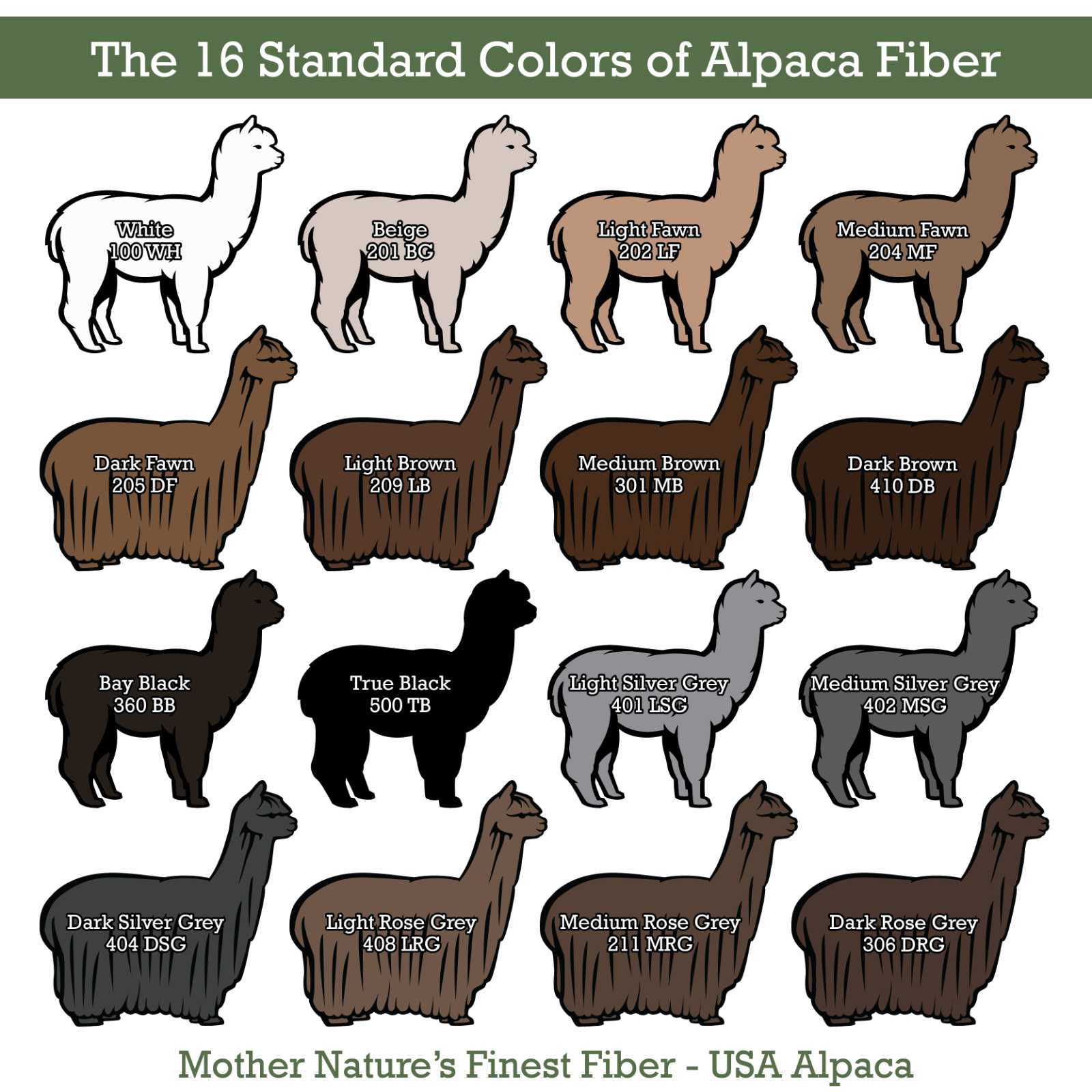
Sorting & Grading
After skirting you will sort and grade your fleece for the next processing step.
Having mesh laundry bags to separate your fleece into as you sort prepares fleece for washing ease.
Sorting your fleece is done using the following criteria:
- Color
- There are 16 recognized colors for Alpacas in the United States: white, beige, Light Fawn, Medium Fawn, Dark Fawn, Light Brown, Medium Brown, Dark Brown, Bay Black, True Black, Light Silver Grey, Medium Silver Grey, Dark Silver Grey, Light Rose Grey, Medium Rose Grey and Dark Rose Grey.
- Staple Length
- Woolen 1.5″-3.75″ (best for knitting and crochet)
- Worsted 3.75″ – 6″ (best for weaving)
- Anything less than 1.5″ separate into your 3rds pile
- Grades (Grade 1 Finest to Grade 6 Coarsest)
- Grade is based on micron size
- 1 is the softest (think baby yarn), 2 and 3 is best for clothing, 4 is great for socks, 5 and 6 are best for things not right next to skin, such as rug yarn or felting.
Washing
Once the fleece has been sorted and graded into the respective mesh laundry bags, we are going to fill up a laundry tub with water and Dawn dish washing liquid.
Tighten the string on the mesh laundry bag. Press the fleece into the tub of water and allow it to soak for 30 minutes.
Do not agitate the fleece or it will felt together.
After 30 minutes pull the bag out of the soapy water and squeeze out the excess water.
Place the fleece into the tub of an old water machine with the agitator removed.
Use the Spin only cycle to pull the water and dirt out of the fleece.
Repeat a second time if the fleece appears to be excessively dirty.
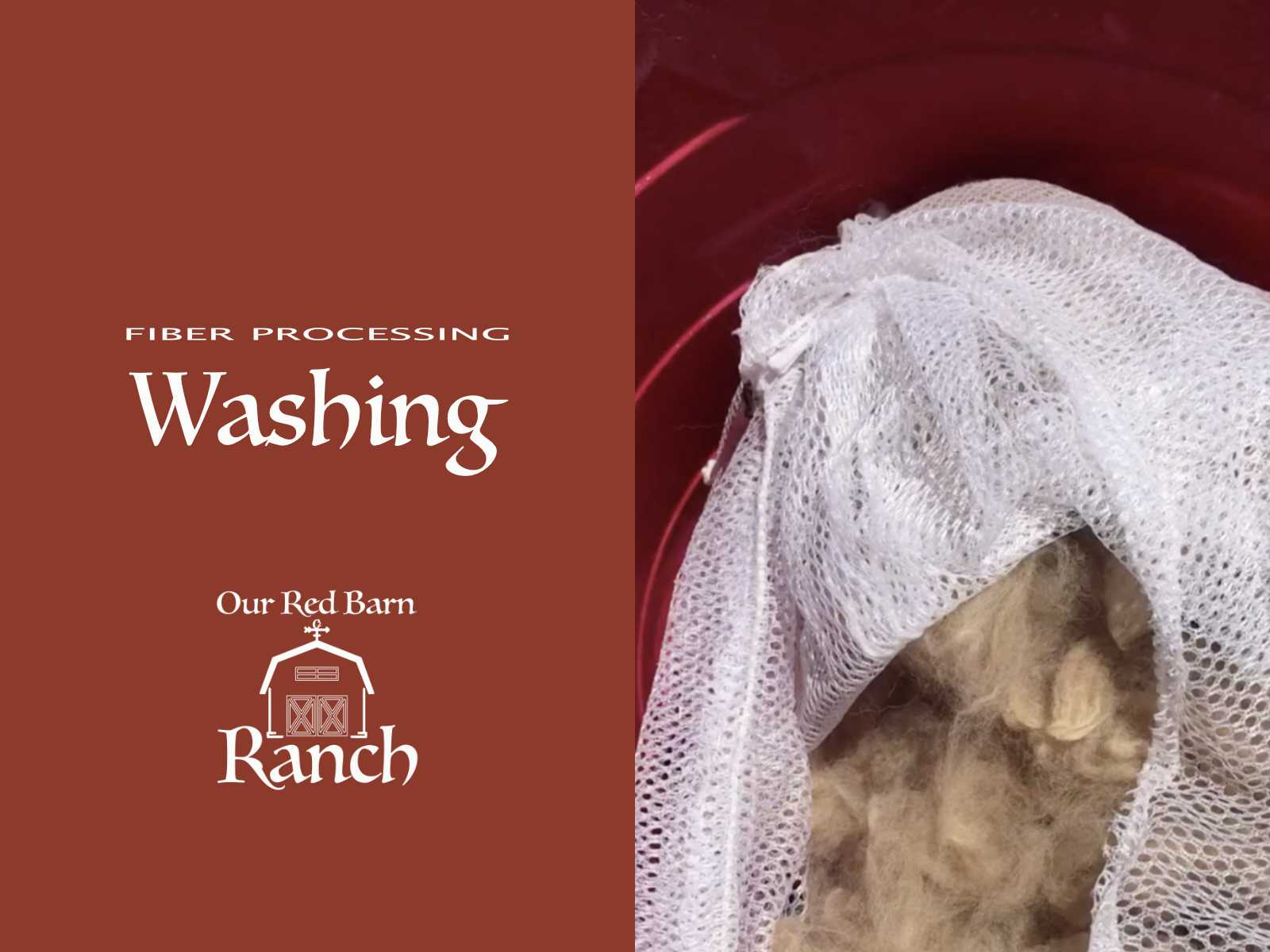
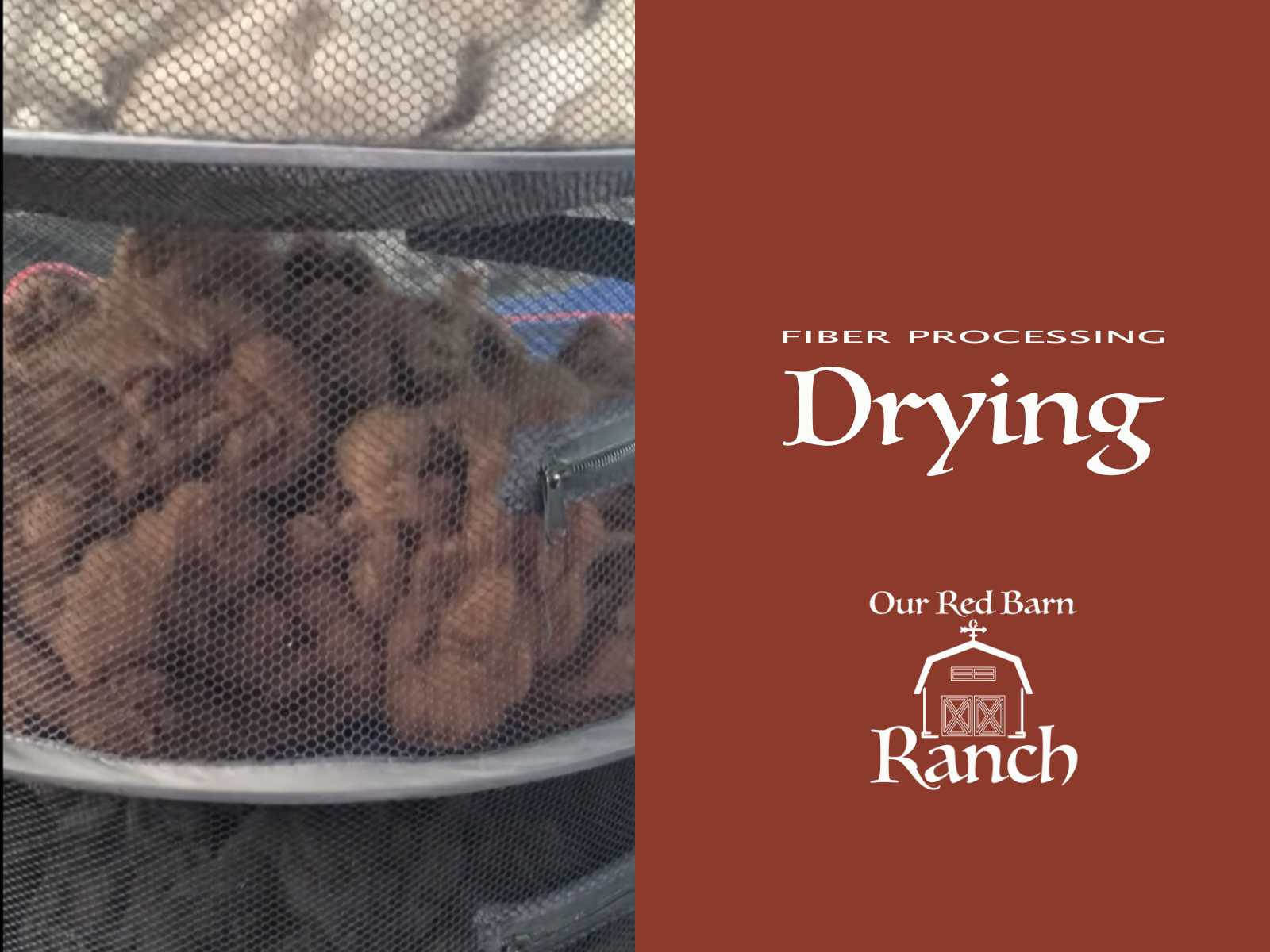
Drying
The cleaned Alpaca fiber will need to be placed on some type of drying rack.
Drying racks can be made similar to a skirting table with a mesh top which allows the water to drain from the clean fleece.
I have a portable drying rack that can be hung outside to allow 6 fleeces to dry at the same time.
It is important to turn the fleeces over to open up the fleece and help the drying process.
Picking & Clouding
The picker is very useful tool that can quickly pull raw fleece apart.
This can be done before or after washing the fleece. I always prefer to wash my fleece first to keep the tools as clean as possible.
However; clean picked fleece will have additional dirt and vegetable matter that will fall out during the clouding process.
If you own a pick, be careful not to hurt yourself with the sharp nails.
Clouded fleece can be used for spinning into yarn, but it will result in a more rustic yarn, with more fall. For smooth & consistent yarn, card the fiber.
Clouding with a picker can be skipped and you can go directly to the carding process, but you might have to run the fleece through the carder a couple times.
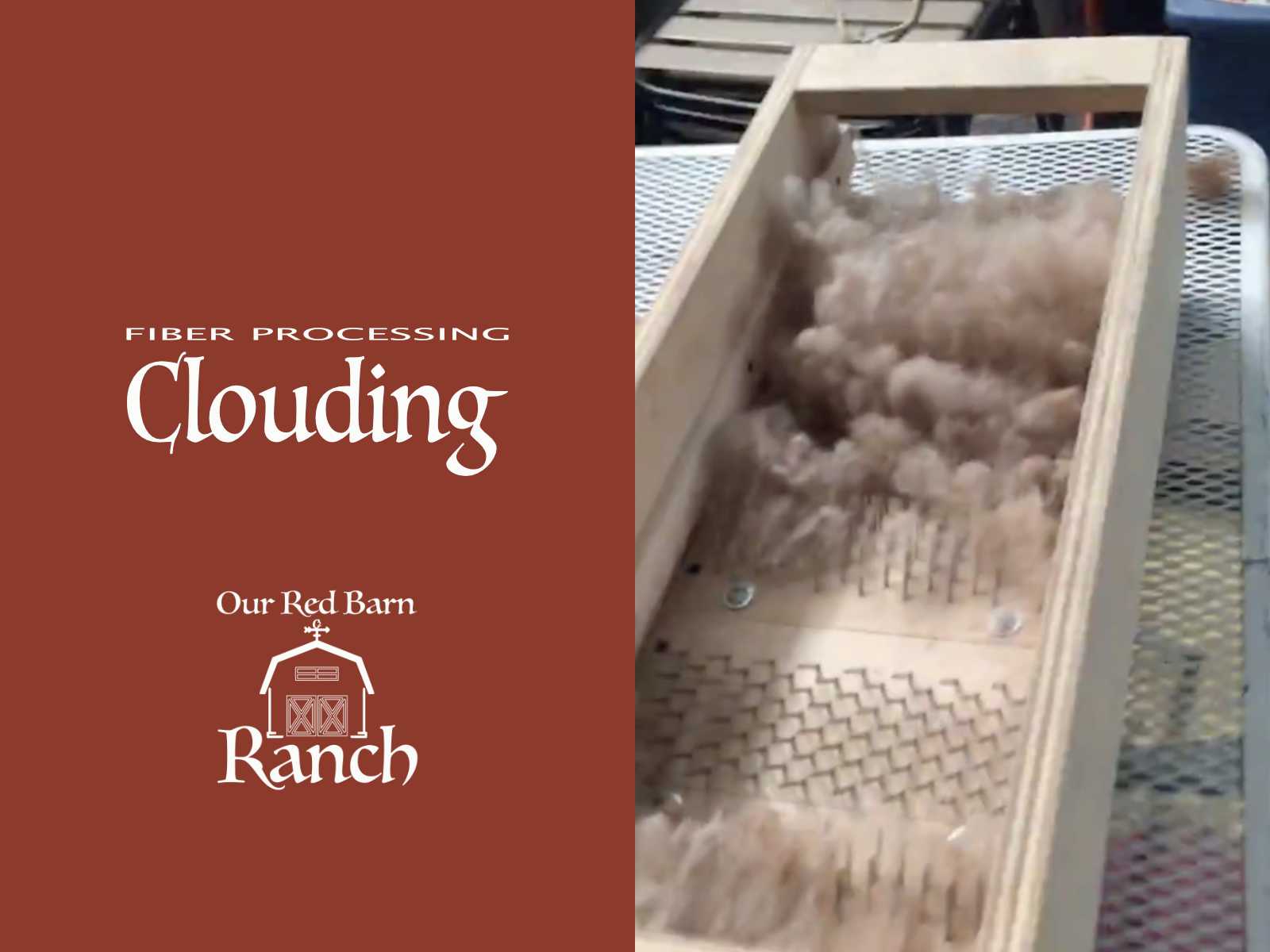
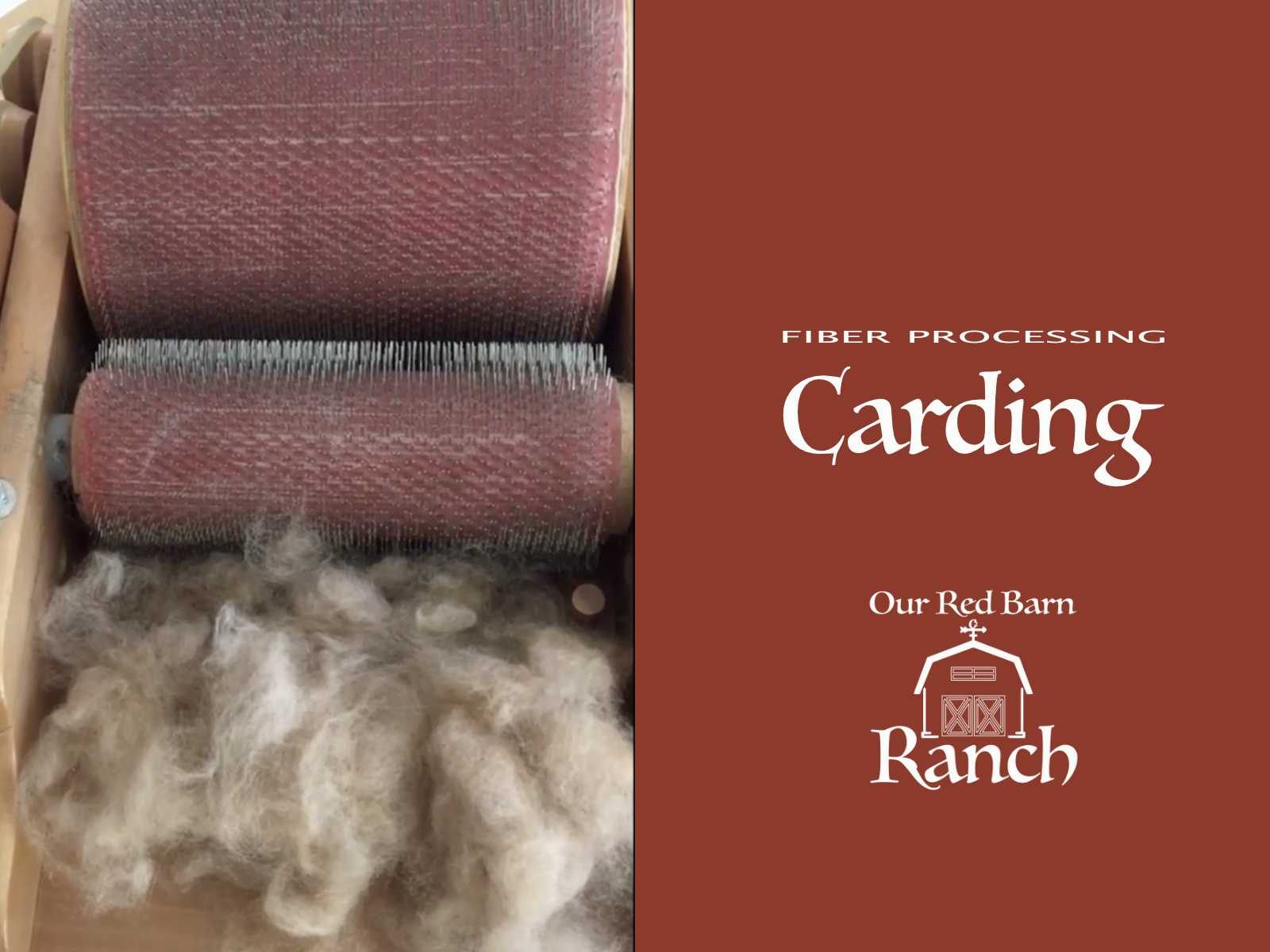
Carding
Once your fleece has been picked into a cloud, it’s ready to be carded either by hand or using a drum carder.
Carding aligns all the fibers in the same direction which is important if you want a smooth yarn that is consistent.
Fiber is fed into the carder and once the fiber is all aligned in same direction (remove any chunks to be re-fed into the carder!), using your maul you can remove your bat of fiber that is ready to be used.
Anytime you find extra VM in your fleece, you’ll find running the fleece through the carder a couple of times, the VM has fallen down into the bottom of the carder.
